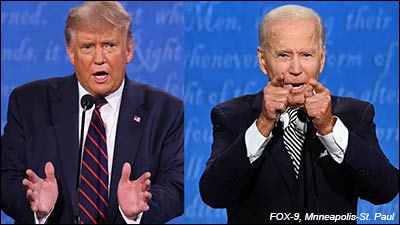By Jim Ellis
Oct. 5, 2020 — It seems every election cycle features a surprise Senate contest. This year, that campaign may reside in New Mexico.For months, it’s been a foregone conclusion that Rep. Ben Ray Lujan (D-Nambe/Santa Fe) would succeed retiring Sen. Tom Udall (D). Recent polling, however, suggests that Republican challenger Mark Ronchetti may have been discounted a bit too early.
The latest polling trends clearly show a narrowing margin. A new Public Opinion Strategies survey for the Ronchetti campaign (Sept. 26-28; 500 registered New Mexico voters; live interview) finds the upstart Republican climbing to within six percentage points of Rep. Lujan, 46-40 percent.
In June, Public Policy Polling (June 12-13; 740 New Mexico voters) projected Lujan holding a predictable 14-point lead, 48-34 percent. At the beginning of September, the Research & Polling firm tested the state (Aug. 26-Sept. 2; 1,123 likely New Mexico voters, live interview) and saw Lujan’s edge slipping a bit to 49-40 percent. In the middle of last month, POS tested the race two weeks before their aforementioned survey and found an almost identical result when compared to their current offering. The mid-September ballot test yielded a 45-39 percent split.
Mark Ronchetti is a former chief meteorologist for the Albuquerque CBS television affiliate in a media market that covers about two-thirds of the state, since it stretches northward to Santa Fe and beyond. Therefore, Ronchetti has significant name identification, though not in relation to politics.
Rep. Lujan won the state’s northern congressional district in 2008, succeeding Udall when he was first elected to the Senate. Prior to his congressional service, the six-term incumbent was a four-year member of the New Mexico Public Regulation Commission.






